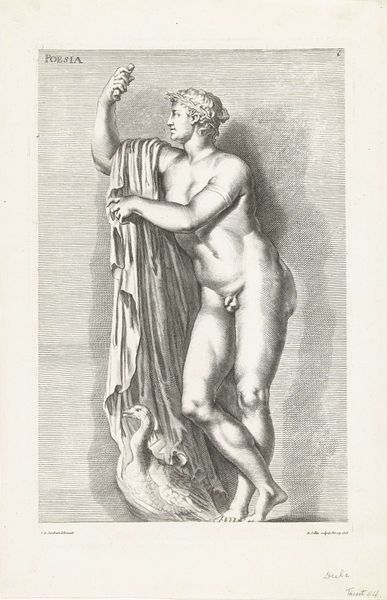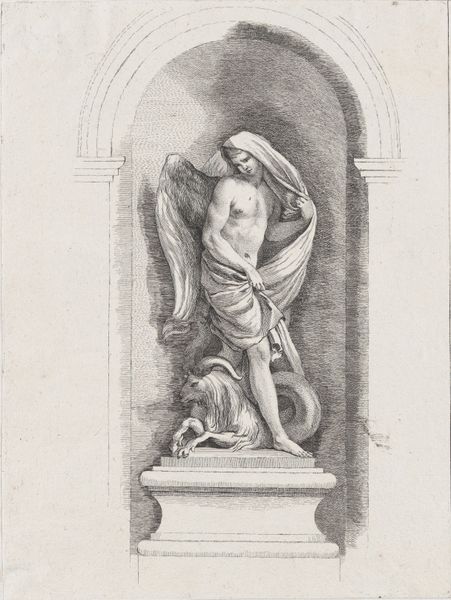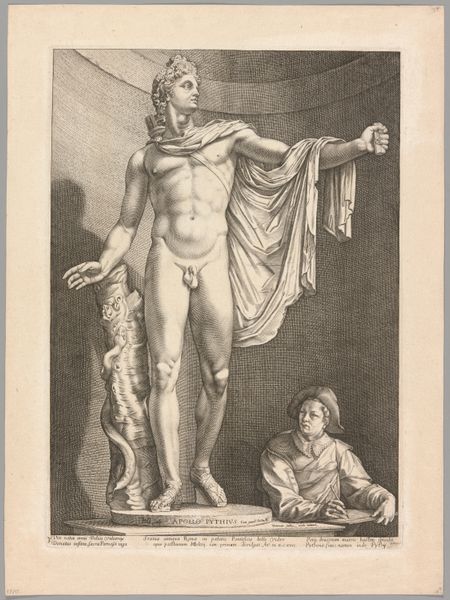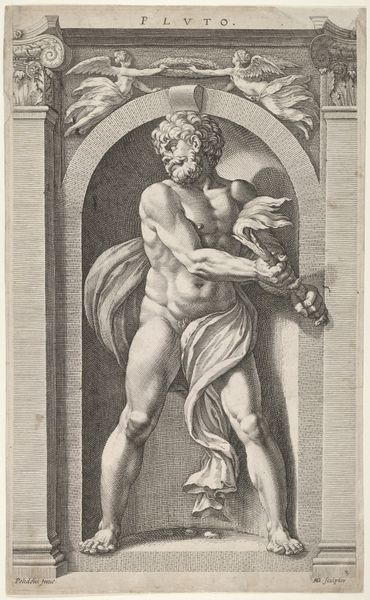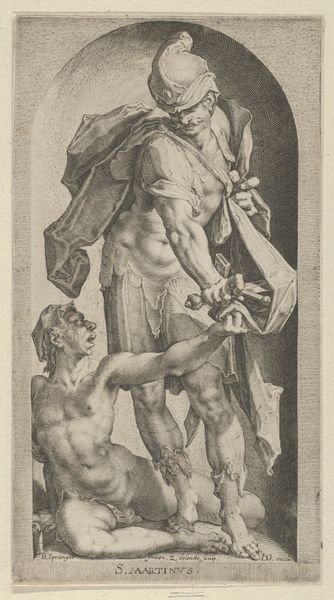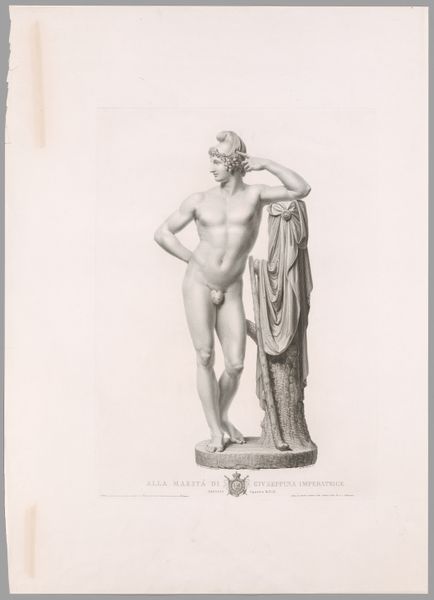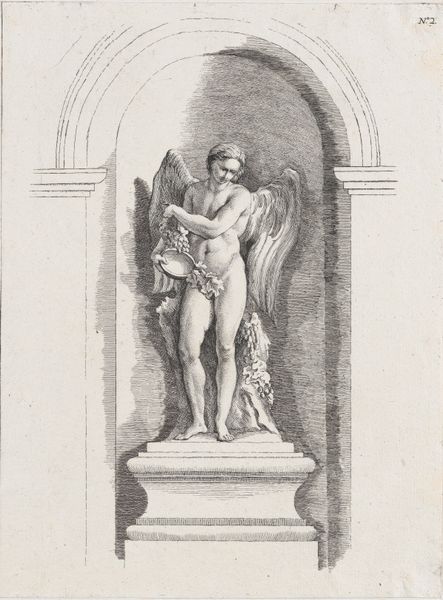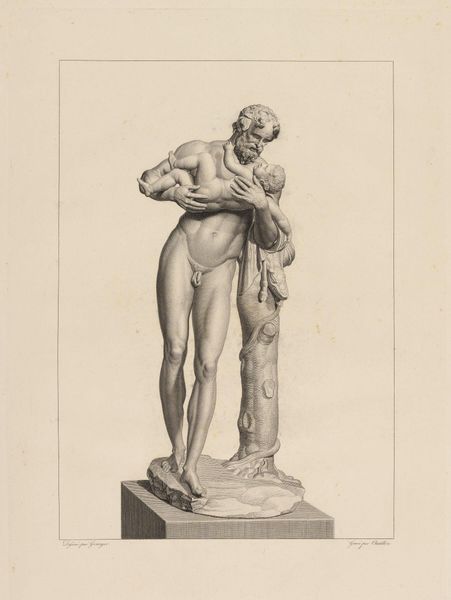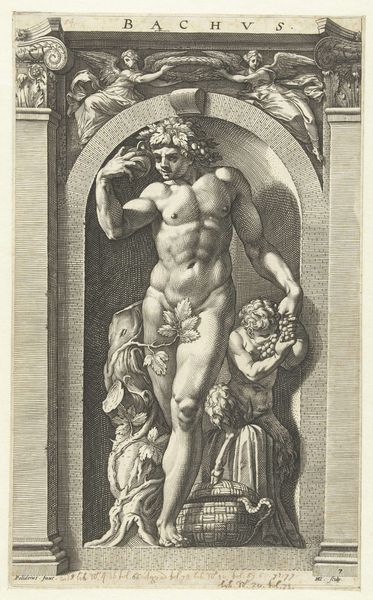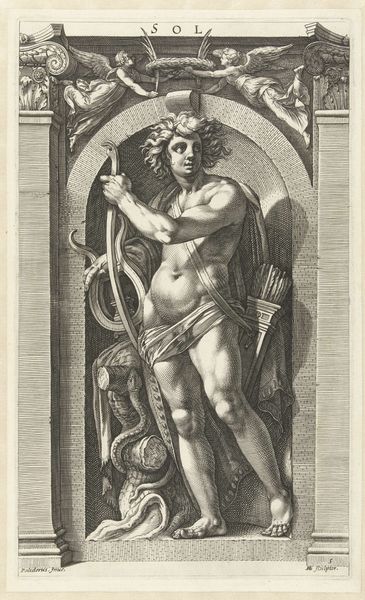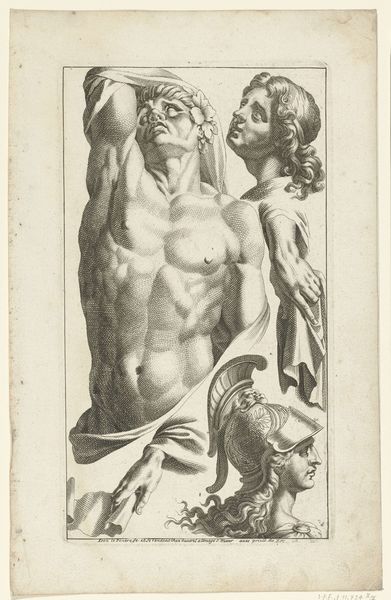
engraving
#
portrait
#
baroque
#
figuration
#
history-painting
#
academic-art
#
engraving
Dimensions: height 302 mm, width 208 mm
Copyright: Rijks Museum: Open Domain
Cornelis Bloemaert made this print of the Farnese Hercules, a famous Roman statue, sometime in the 17th century. It’s worth considering why an artist in the Dutch Republic might choose to depict a classical sculpture. In the 17th century, the Dutch Republic was a major center for artistic innovation and commerce. This print reveals the cultural networks that extended across Europe, as Dutch artists looked to classical antiquity and Italian Renaissance art for inspiration. Prints like this one played a crucial role in disseminating knowledge about classical art, making it accessible to a wider audience beyond the elite circles who could travel to see the original sculptures. The statue's exaggerated musculature and heroic pose speak to a fascination with physical power and idealised beauty that was cultivated in academic institutions throughout Europe. Art historians rely on a wide range of sources, including archival documents, to understand better the role of images in shaping cultural values. The study of prints reminds us that art is always embedded in a specific social and institutional context.
Comments
No comments
Be the first to comment and join the conversation on the ultimate creative platform.
